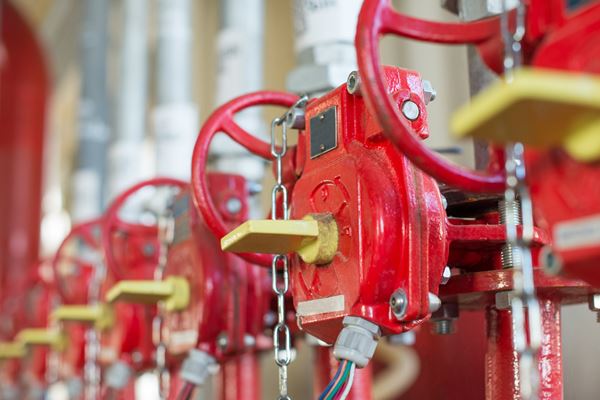Guide to Fire Protection Systems: Adherence to Standards Key Components and Maintenance

Navigating the complexities of fire protection systems, which are designed to detect and suppress fires, form a critical line of defense in any infrastructure. Their components and operation are not well understood. This article will provide a basic understanding of fire protection systems, their integral elements, and operational essentials, as knowledge of fire suppression mechanisms, lithium-ion batteries, and utility transformers is of utmost importance for ensuring business continuity and safety.
Standards, Components, and Maintenance of Fire Protection Systems
Fire protection systems are designed and constructed to the NFPA 13 standard, “Installation of Sprinkler Systems”. This standard incorporates other standards for elements like piping specifications, water supplies, pump systems, and alarm system monitoring points. NFPA 25 is another critical standard that governs the inspections, testing, and maintenance of these systems. Ensuring regular testing and inspection of these systems is the building owner's duty and can be performed in-house or outsourced to expert companies.
Contrary to common misconception, sprinklers in most systems do not activate all at once, as each sprinkler responds individually to heat. Sprinklers are available in various types, such as upright, pendant, sidewall, and special applications like extended spray, fast response, large droplet, and extra-large orifice. The choice of sprinkler depends on the specific protection needs of the area.
Fire alarm signaling devices are another essential component of fire protection systems. These devices, including valve tamper switches and flow switches, are engineered to send a signal within a set time frame when water flow in the system is detected and ensures rapid fire detection and response.
Commercial Utilizations of Fire Protection Systems
Commercial cooking establishments pose unique fire protection challenges. NFPA 96 mandates the installation of a suppression system in any commercial system that will generate grease-laden vapors. These systems function similarly to wet pipe sprinkler systems but use a fusible element detector to activate the system. Activation releases a wet chemical agent that cools the protected surface, disrupts the combustion chemical chain reaction, and saponifies the surface grease, effectively quelling the fire.
Fire suppression systems are an integral part of life safety systems. Yet, these systems can fail due to factors like mechanical damage, improper assembly, freezing, water hammer, corrosion, and inadequate maintenance. Regular inspection and maintenance of these systems are crucial to ensure their effective operation.
Lithium-Ion Battery Fire Risk
Lithium-ion batteries power a wide range of devices, from smartphones to electric cars. These batteries can present a significant fire risk if they undergo thermal runaway, an overheating condition that can lead to a potential explosion, typically caused by overcharging or mechanical damage. Energy storage systems often employ large lithium-ion batteries, which can pose a substantial fire risk if not properly handled.
In one instance, a solar farm suffered a $6.5 million loss due to a fire that engulfed four battery containers. This likely could have been averted with the simple engineering decision to install a non-combustible wall between the containers, underscoring the importance of expert engineering input in the design and installation of these systems.
The complexity of fire protection systems, components, and operations directly corresponds to their importance in ensuring building safety, effective fire prevention, and suppression. As technological advancements and standards develop, fire protection systems technology becomes equally technologically advanced. Adhering to guidelines, scheduling regular inspections and maintenance, and utilizing the expertise of seasoned engineers can be crucial to averting expensive and potentially hazardous situations.
Our experts are ready to help.



